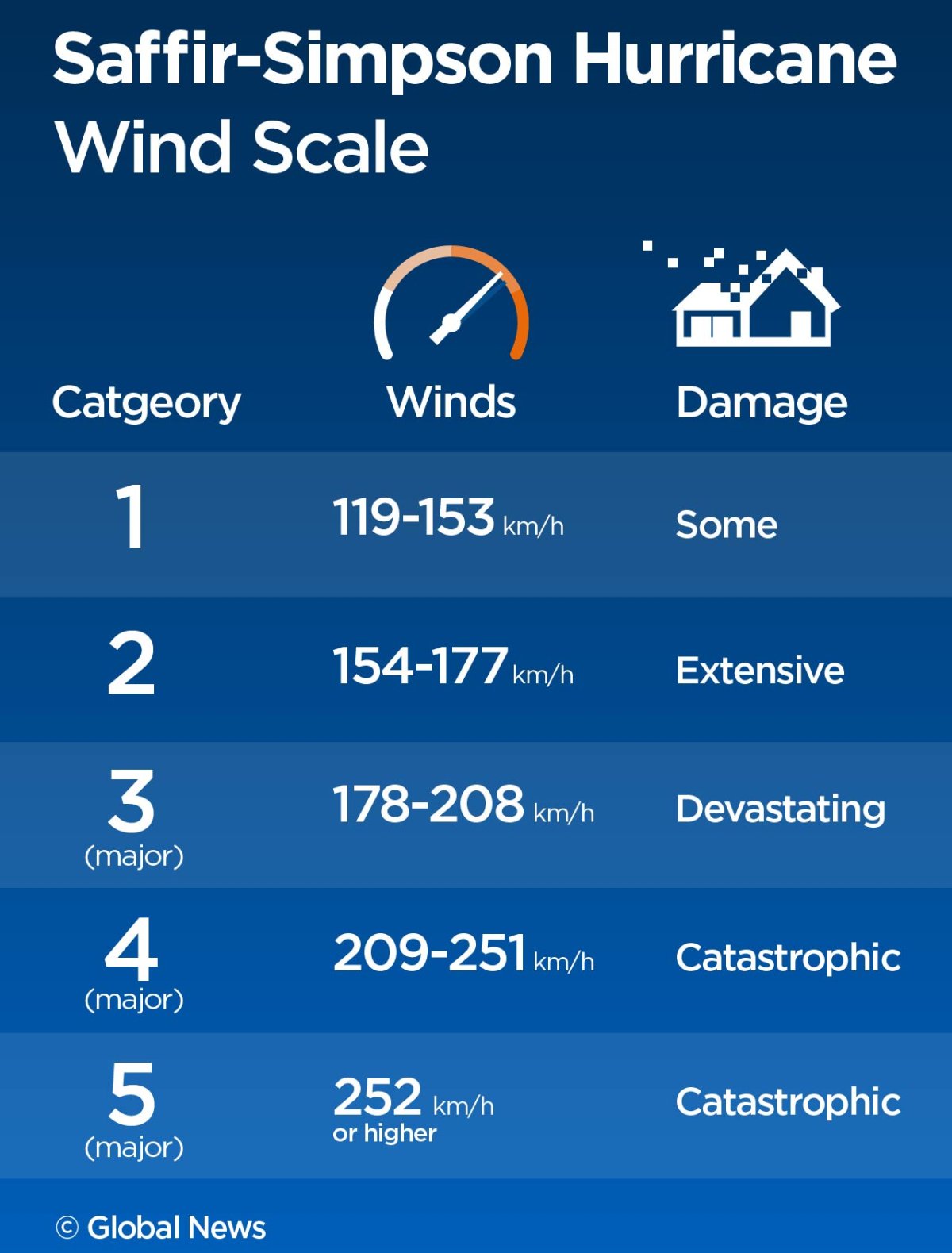As Hurricane Florence barrels towards the U.S. East Coast, many forecasters say the “extremely dangerous” storm could grow into a Category 5 before making landfall — the most catastrophic level.

Florence, which is currently at a Category 4 storm, is expected to hit land Thursday night, along the coast of North Carolina, South Carolina and Virginia. But before it lands, the National Hurricane Center predicts the “life-threatening storm” could strengthen to near Category 5 intensity on Tuesday.
If Florence makes landfall as a Category 5, it would be the strongest storm to come ashore that far north in the U.S. (in recorded history).
“It’s such a textbook example of a perfect hurricane. It’s almost a perfect circle. Nothing is stopping this storm,” said Athena Masson, a researcher in the department of physical and environmental sciences at the University of Toronto. “We can expect total devastation close to shore and outer banks.”.
A Category 5 hurricane is the strongest storm on the “Saffir-Simpson Hurricane Wind Scale,” according to the National Hurricane Center (NHC) It’s a scale of a one to five ratings based on a hurricane’s sustained wind speed.
WATCH: Coverage of Hurricane Florence
The scale estimates potential property damage; so hurricanes reaching Category 3 and higher are considered major because of their potential for significant loss of life and damage.
The Atlantic Ocean has produced only three Category 5 hurricanes in the last decade — Irma and Maria in 2017 and Matthew in 2016. From 1924 through 2017, there are 33 Category 5 hurricanes on record in the Atlantic Basin, according to the National Oceanic and Atmospheric Administration (NOAA).
“They are very few and far in between,” Masson said. “A hurricane is such a large system and it takes so much space that it needs that prime conditions, like minimal wind sheer and perfect sea surface temps.”

Get breaking National news
However, she said there is a chance that climate change can change this rarity.
Could there ever be a Category 6 storm?
“Hurricanes cannot go past a Category 5, according to the scale we use. The reason it does not go past that is that the scale goes by damage and wind speed,” Masson said. “So a Category 5 hurricane is total destruction, and you can’t past total destruction.”
A Category 5 hurricane is considered a “major storm” on the scale and damage can be “catastrophic,” according to the NHC. Winds can reach up to 252 km/h or higher in this category.
“A high percentage of framed homes will be destroyed, with total roof failure and wall collapse,” the NHC said on its website. “Fallen trees and power poles will isolate residential areas. Power outages will last for weeks to possibly months. Most of the area will be uninhabitable for weeks or months.”
But Masson said with climate change there is a chance this could change the “scale” as storms become more severe.
WATCH: Hurricane Irma was a level 5 storm that devastated Florida

“It’s very tough to say that more Category 5 storms are coming,” she said. “But there is definitely the potential as climate change increases sea surface temperatures. So with the correct ingredients, you could see an increase in this category.”
She added that although hurricanes can’t go past a Category 5 on the Saffir-Simpson Hurricane Wind Scale, it could surpass that in terms of size. So a Category 6 hurricane could be possible in terms of scope, precipitation and wind speed, she said.
She added that there “definitely” could be a Category 6 storm in the near future (if using the size scale).
“I would like to see it in my lifetime, but in the middle of nowhere,” she said.
Timothy Hall, senior scientist at the NASA Goddard Institute for Space Studies, told the LA Times that hurricane wind speeds could strengthen significantly by the end of the century due to warmer ocean water.
“If we had twice as many Category 5s — at some point, several decades down the line — if that seems to be the new norm, then yes, we’d want to have more partitioning at the upper part of the scale,” Hall said.
“At that point, a Category 6 would be a reasonable thing to do.”
WATCH: Puerto Rico concedes Hurricane Maria, a Category 5 storm, killed at least 1,400 people



























Comments